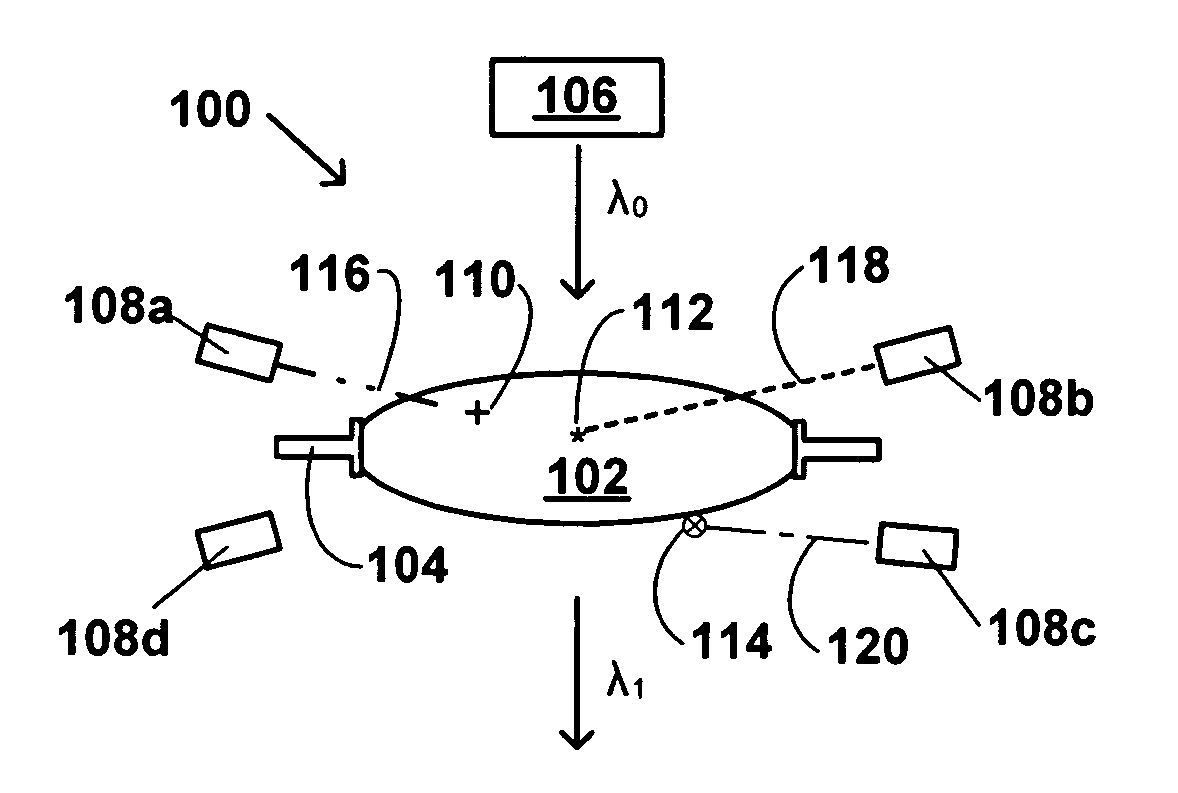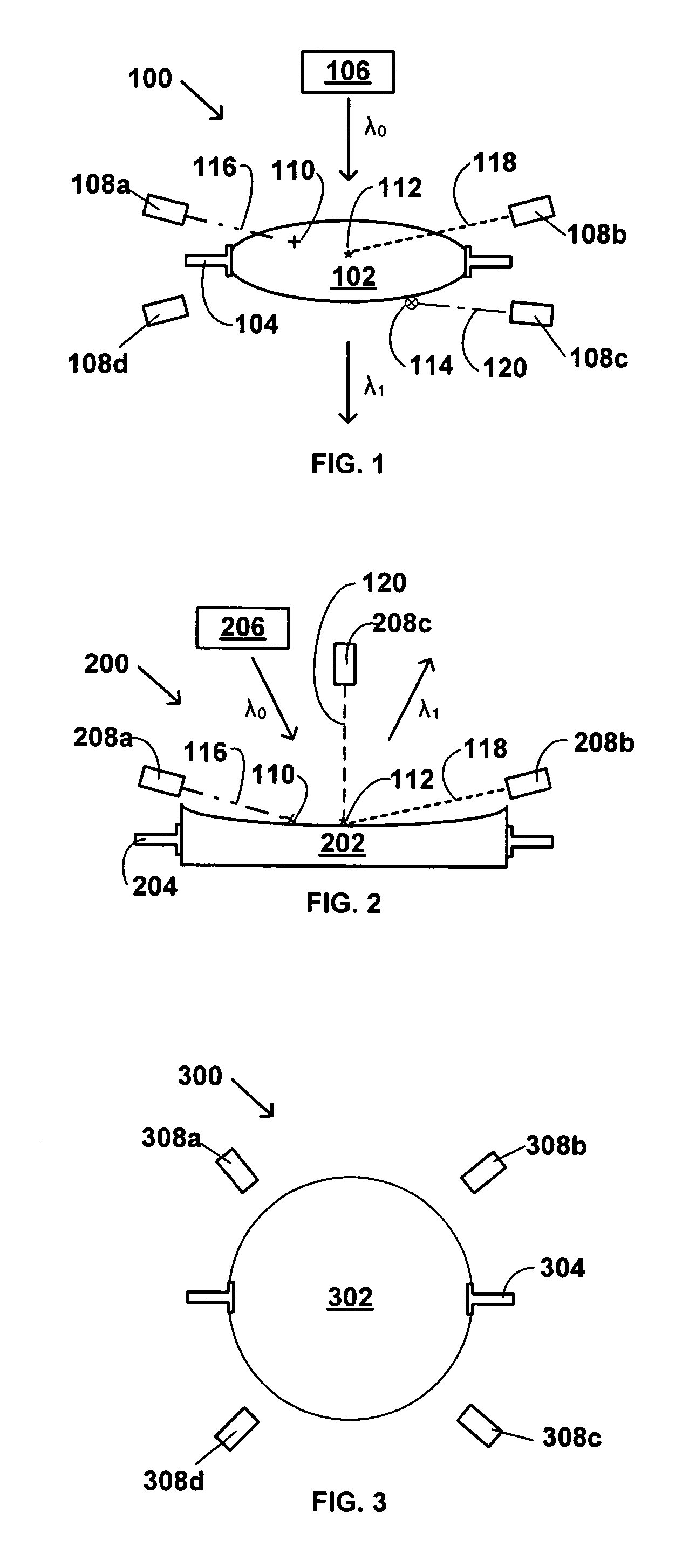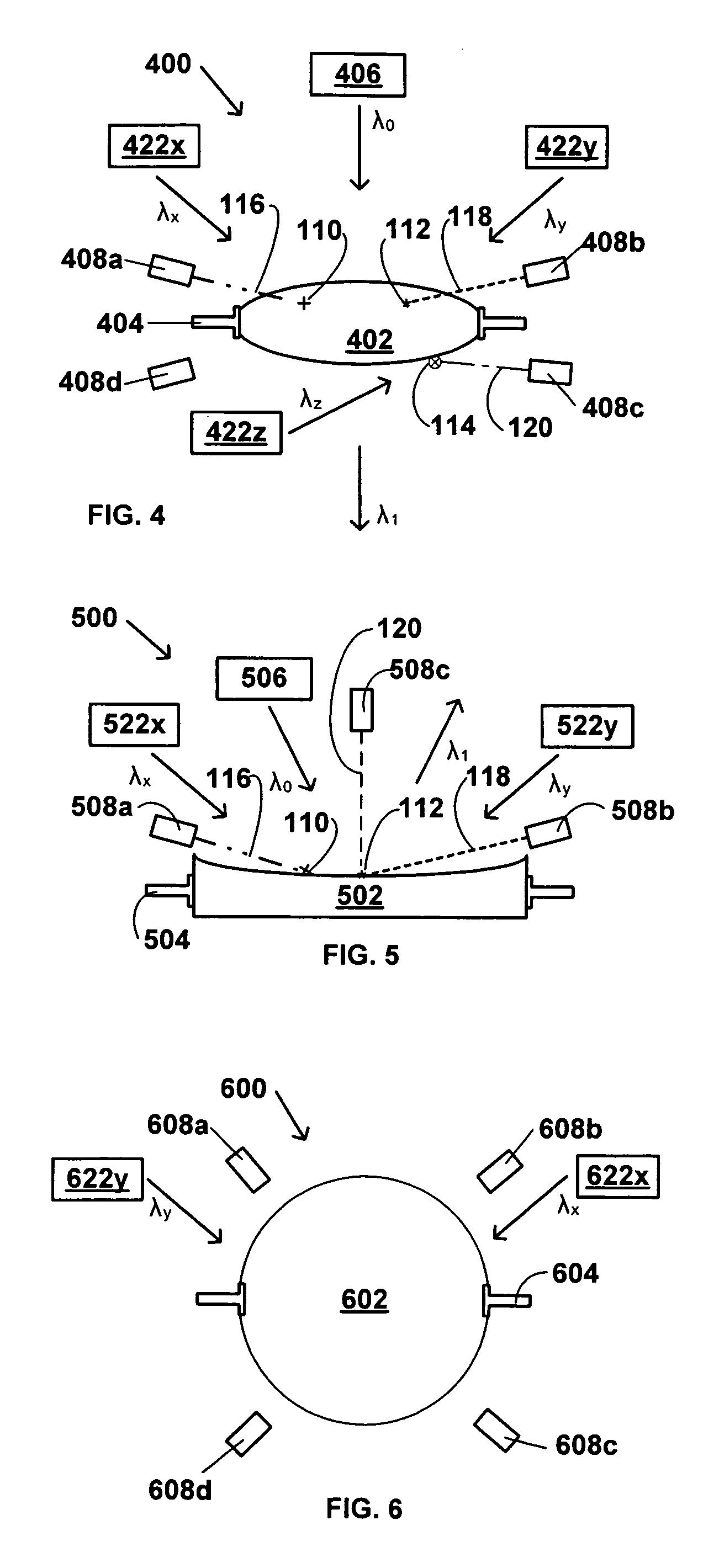Detection of contamination in imaging systems by fluorescence and/or absorption spectroscopy
a technology of absorption spectroscopy and imaging system, which is applied in the field of integrated circuit manufacture, can solve the problems of preventing or reducing the degree of improvement in lithographic system, and achieve the effect of high efficiency
- Summary
- Abstract
- Description
- Claims
- Application Information
AI Technical Summary
Benefits of technology
Problems solved by technology
Method used
Image
Examples
second embodiment
[0041]Referring next to FIG. 2, there is schematically illustrated a side elevation view of a portion of an imaging system 200, in accordance with the invention. The imaging system 200 includes a reflective lens 202, a lens mount 204, a source 206 of first incident radiation, λ0, and a plurality of detectors 208a, 208b and 208c. The first incident radiation λ0 is provided by the source 206, and in operation of the imaging system 200, reflected radiation, λ0, exits the reflective lens 202 after being reflected by the lens 202. The reflected radiation λ0, is referred to by a different reference symbol because it generally will have been altered in some manner by its reflection by the lens 202. The detectors 208a–c detect third radiation emitted or transmitted, i.e., not absorbed, by the contaminant species of interest, such as one of those described in more detail above. The detectors 208a–c are indicated by different reference numerals to indicate that they may be different detectors...
first embodiment
[0043]In the embodiment illustrated in FIG. 2, the first incident radiation, λ0, strikes the contaminants 110, 112. In this embodiment, the system is passive, in that it does not include a separate source of second radiation for excitation of the contaminants 110, 112, but instead relies upon interaction of the first incident radiation, λ0, with the contaminants 110, 112. Thus, in this embodiment, as in the first embodiment, the second radiation is a portion of the first incident radiation. In this embodiment, interaction of the first incident radiation, λ0, with the contaminants 110, 112 causes the contaminants to first absorb energy from the first incident radiation, and then to emit energy, as the third radiation, which can be detected by the detectors 208a, 208b and 208c. In one embodiment, the emission of energy by the contaminants 110, 112 when excited by the first incident radiation, is fluorescence, and in another embodiment, the emission of energy by the contaminants 110, 1...
PUM
| Property | Measurement | Unit |
|---|---|---|
| wavelengths | aaaaa | aaaaa |
| wavelengths | aaaaa | aaaaa |
| wavelengths | aaaaa | aaaaa |
Abstract
Description
Claims
Application Information
 Login to View More
Login to View More - R&D
- Intellectual Property
- Life Sciences
- Materials
- Tech Scout
- Unparalleled Data Quality
- Higher Quality Content
- 60% Fewer Hallucinations
Browse by: Latest US Patents, China's latest patents, Technical Efficacy Thesaurus, Application Domain, Technology Topic, Popular Technical Reports.
© 2025 PatSnap. All rights reserved.Legal|Privacy policy|Modern Slavery Act Transparency Statement|Sitemap|About US| Contact US: help@patsnap.com



